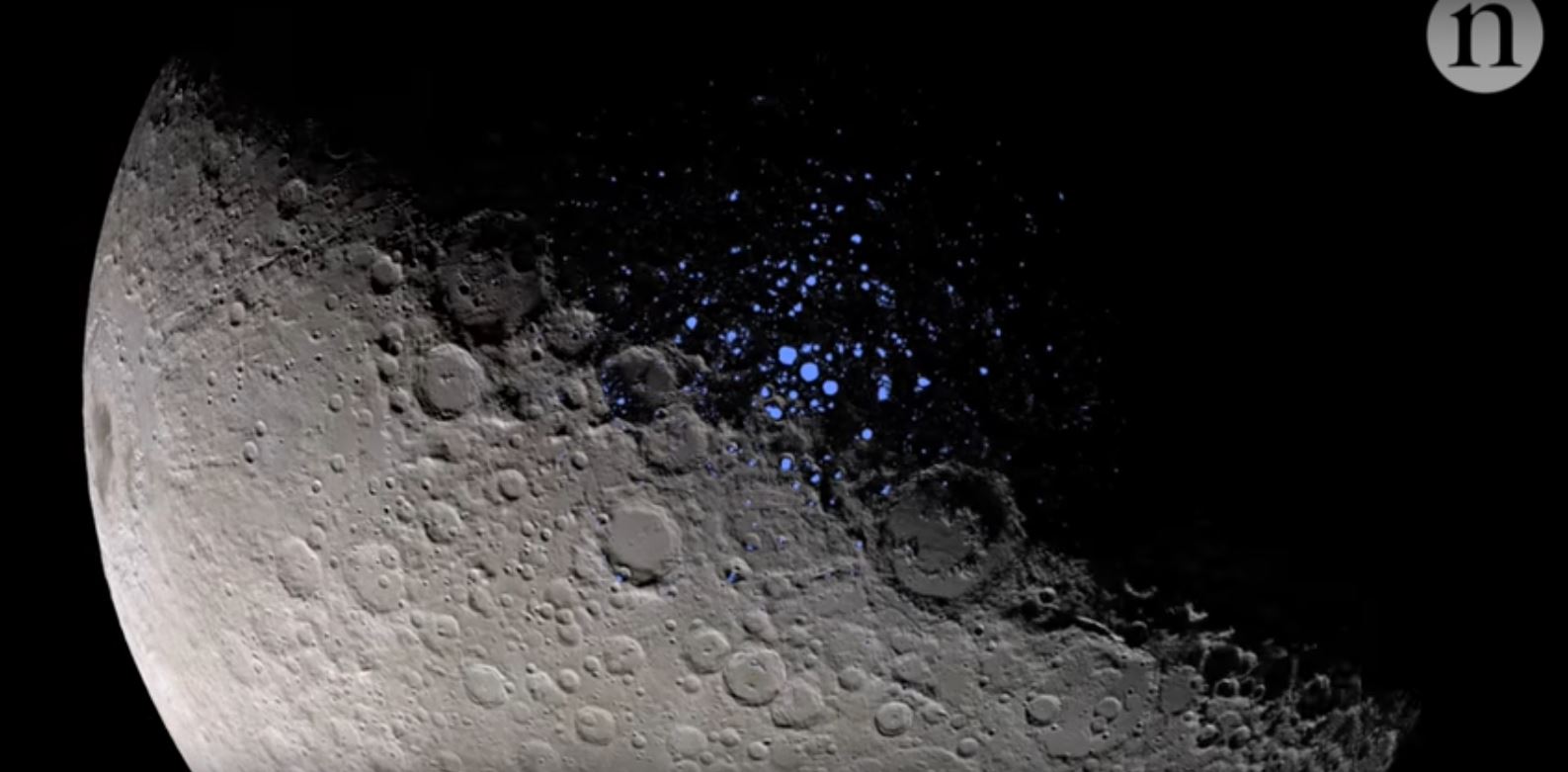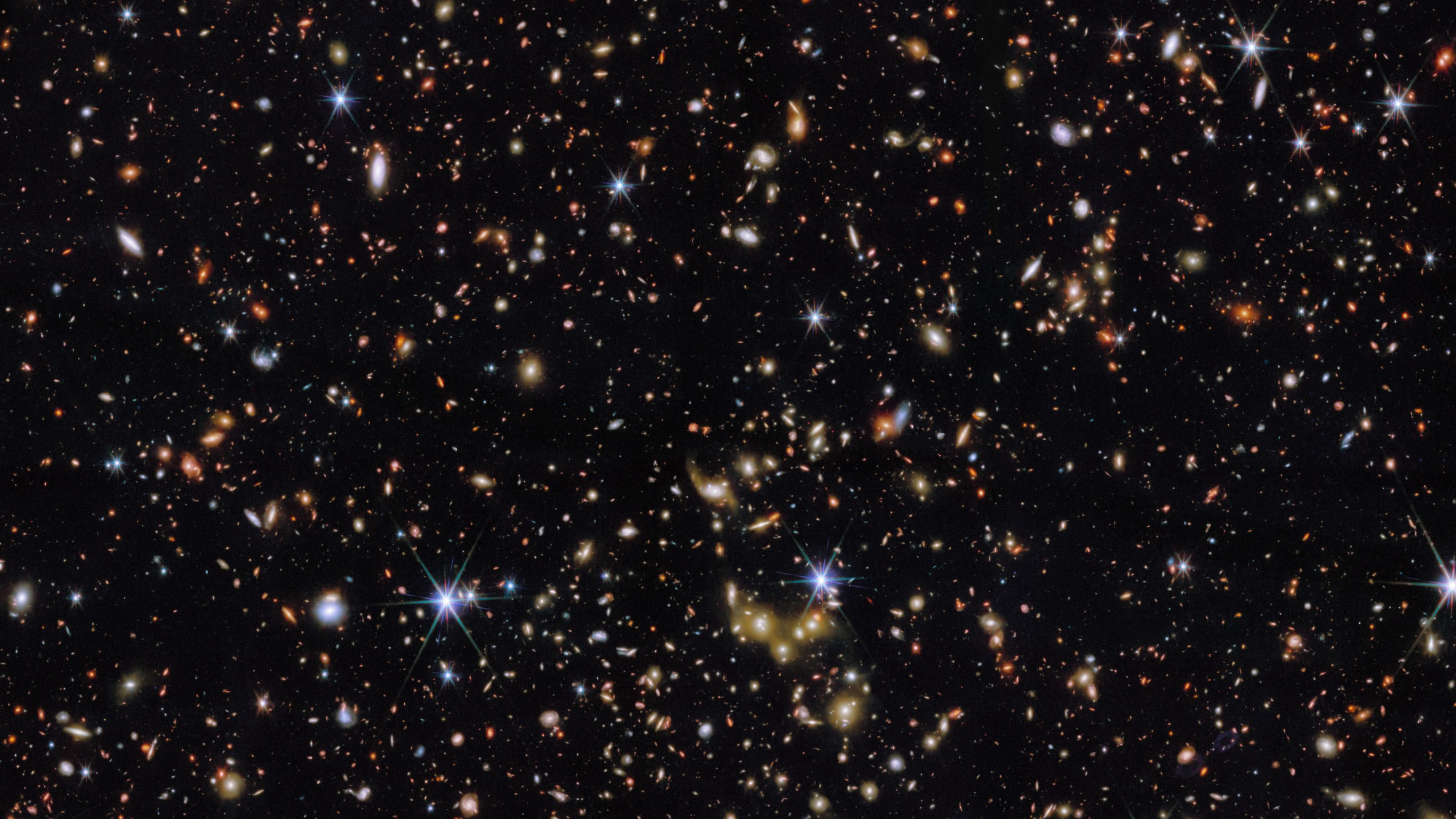Water Ice Found On Dwarf Planet Ceres, Hidden in Permanent Shadow

Just like the moon and Mercury, the largest asteroid in Earth's solar system, Ceres, has cold pockets of perpetual darkness on its surface where researchers have now detected ice, a new study finds.
It remains a mystery, however, why only small amounts of ice were detected in these shadowy crater floors, the authors of the new research say.
With a diameter of about 585 miles (940 kilometers), Ceres is referred to as both an asteroid and a dwarf planet. It is the dwarf planet closest to Earth and the largest member of the solar system's main asteroid belt, located between Mars and Jupiter. Water is not entirely uncommon on Ceres — previous observations revealed plumes of water vapor erupting from Ceres, exposed water ice has been seen at mid-latitudes (although only in a rare instances), and the dwarf planet's surface material is a mixture of rock and ice; additional research has suggested that Ceres possesses a substantial amount of ice under its surface. [Amazing Photos of Dwarf Planet Ceres]
Like the moon and Mercury, the axis on which Ceres spins is tilted only a few degrees with respect to the path it follows around the sun. This means Ceres' poles are only ever slightly angled toward the sun. (In comparison, Earth has an axial tilt, or obliquity, of about 23.4 degrees, which explains why the planet experiences seasons — long summer days occur in the hemisphere tilted toward the sun, and long winter nights happen in the hemisphere tilted away from the sun.)
The modest axial tilt of the moon and Mercury means that craters at their poles have spots on their floors where the sun never shines. These permanently shadowed regions serve as "cold traps" where water ice can survive. In areas where the sun shines directly on the surface, water ice is warmed up and sublimates (turns directly into a gas).
Prior work suggested that Ceres might possess cold traps like those of the moon and Mercury. Now researchers for the first time have images of ice trapped within permanently shadowed regions on Ceres.
Only 10 of these craters had "bright spots," which reflect high levels of sunlight. By studying the wavelengths of light reflected off these patches, the researchers identified one of these reflective surfaces as containing water ice.
Get the Space.com Newsletter
Breaking space news, the latest updates on rocket launches, skywatching events and more!
On Mercury, water likely formed when hydrogen atoms in the solar wind — a stream of particles coming from the sun — bombarded and chemically reacted with oxygen on Mercury's surface. In contrast, much of the moon's water may be ancient, mostly chemically bound to lunar rocks since the moon's formation, with water vapor occasionally making its way to polar craters where it freezes to become ice.
"It is unlikely that the solar wind formed much of the water on Ceres, since it's so far away from the sun," said study lead author Thomas Platz, a geologist at the Max Planck Institute for Solar System Research in Göttingen, Germany.

That ice was seen in just one of the craters the researchers looked at "is surprising," Platz told Space.com. One possibility is that cosmic impacts may have masked the ice in other craters with dust, he said. Another possibility is that the axial tilt of Ceres may vary over very long periods of time (even though it appears steady now), therefore exposing craters to sunlight that could destroy the water ice, he added.
Although water is associated with life on Earth, Platz stressed that the discovery of frozen water on Ceres should not be seen as a sign of life on the dwarf planet.
"It's pretty cold in these permanent shadows — about 60 Kelvin [minus 351 degrees Fahrenheit, minus 213 degrees Celsius]," Platz said. "I presently don't see how life can form in such places."
It remains uncertain how much ice these craters on Ceres might hold "because it's hard to measure shadowed regions," Platz said. Still, "the deposit of ice in at least one crater appears quite thick, maybe meters thick."
However, mining ice on Ceres — to use as rocket fuel, for example — might prove a challenge.
"If you want to send any robotic devices into these shadows, they shouldn't depend on solar-generated energy," Platz said. "They'd need batteries, or maybe would need to climb back to the rim to charge their batteries."
The scientists detailed their findings online Dec. 15 in the journal Nature Astronomy.
Follow Charles Q. Choi on Twitter @cqchoi. Follow us @Spacedotcom, Facebook and Google+. Original article on Space.com.
Join our Space Forums to keep talking space on the latest missions, night sky and more! And if you have a news tip, correction or comment, let us know at: community@space.com.

Charles Q. Choi is a contributing writer for Space.com and Live Science. He covers all things human origins and astronomy as well as physics, animals and general science topics. Charles has a Master of Arts degree from the University of Missouri-Columbia, School of Journalism and a Bachelor of Arts degree from the University of South Florida. Charles has visited every continent on Earth, drinking rancid yak butter tea in Lhasa, snorkeling with sea lions in the Galapagos and even climbing an iceberg in Antarctica. Visit him at http://www.sciwriter.us










